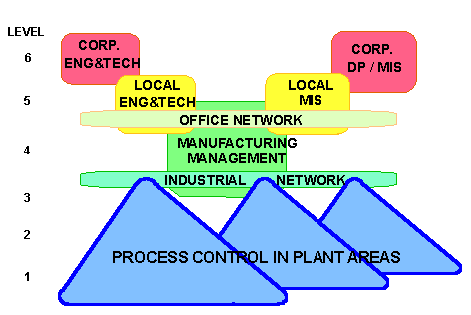
Physical Architectures include the computing systems and communication networks which comprise the Control and Information Systems of the Enterprise (See also Logical Architectures).
At the Master Planning level, they are represented by a system block diagram, which is evolved into a System Architecture Diagram during the Conceptual and Preliminary Engineering Phases. During Detail Design, these are further developed into network diagrams and schematics and ultimately cabinet layouts and wiring diagrams. Each step in development of the physical architecture must be regarded as an integral part of the engineering of the final facility.

Physical Architectures differ widely as a result of the requirements and constraints of each industry, however, there is considerable commonality between similar applications in different industries. A library of block architectures has been provided (by industry) below.
Physical System Architectures are best designed using certain rules. These rules are based on assessment of the 4R's of system design, specifically:
The application of these rules is explained in "Design of Enterprise Architectures".
Each industry is likely to have different functional requirements, as well as different 4R's, which will result in different system architectures. In practice however, the best architecture is usually very similar between plants in the same industry. Example architectures for specific industries are described below.
Select Industry Group or Subgroup (Sorry, most of these links are still "dead". We're working on it)
by Gary Rathwell © reserved